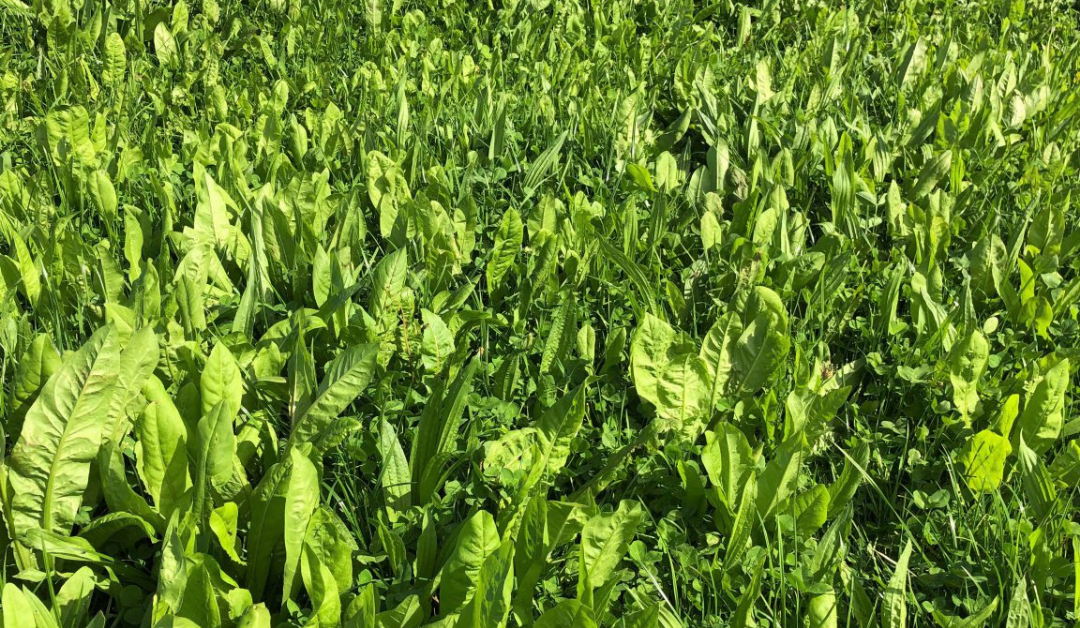In recent years, multi-species swards have become increasingly popular amongst farmers in Ireland due to their ability to produce high yields of quality forage, with greatly reduced rates of nitrogen fertiliser compared to ryegrass-only swards.
If you are considering a multi-species or looking to find out more, we have put together a list of frequently asked questions and answers below!
Questions & Answers
What are the benefits?
- Diversification of species in the sward improves intake and animal performance.
- Due to an increased rooting depth, some multi-species swards are much more tolerant of drought than a grass sward.
- Due to the organic matter returns from these different species, soil quality is often improved. Soil structure improvements are also a benefit due to the root systems creating more channels for water and air to pass through the soil.
- A well-managed clover content in the sward can allow you to cut mineral fertiliser application by more than half in summer. Clover content also leads to a higher true protein content in the sward.
The use of multi-species swards compared to grass only swards can also provide a wide range of environmental and ecological benefits:
- Plantain and chicory act at different levels to avoid losses of nitrogen on the farm: reduced leaching, better N use by livestock, and fewer emissions from urine patches.
- Higher rates of carbon sequestration due to deeper root depths.
- They are also very beneficial for biodiversity and in particular pollinators who feed on the flowering plants in multi-species swards.
Will I need less fertiliser?
Yes, once the sward is established! The clover content within the sward will reduce mid-season nitrogen requirements once they are established, however, they need to be fed properly to achieve optimum establishment. Lime, Phosphate & Potash requirements remain the same or increase slightly.
Will deeper rooting plants not get more P & K from soil and need less applied as a result?
This would be an expected benefit once established properly, however, we recommend waiting until soil tests confirm a rise in fertility before reducing fertiliser inputs.
If I encounter problems with weed control, what are my options?
Research trials clearly show that multi-species mixtures are excellent at resisting weed pressure. Weed control options are very limited and the only option currently available is mechanical. i.e. cutting.
For more information, download our multi-species suitability checklist here.
Key facts
Optimum soil fertility & pH is required.
- pH: 6.3-6.5.
- P & K indexes: 3-4.
Multi-species don’t tolerate poaching.
The growing point of red clover and plantains are above ground level and over-grazing or poaching can severely damage regrowth.
Weed control is problematic.
Established swards can out-compete weeds but during establishment, weeds can out-compete multi-species swards. Avoiding the problem is the only solution.
Grazing management is different from ryegrass swards.
Longer rotations, bigger pre-grazing covers, and higher residual covers work best for a multi-species sward.
Cutting and ensiling are limited.
Multi-species swards typically have a lower DM content and are harder to preserve.
Therefore, it is recommended that multi-species swards for silage are cut in dry conditions and allowed a sufficient wilt period to improve the chances of successful preservation. Cutting heights also need to be monitored to avoid crown damage.
Choosing the right mixture.
This year, we have added a new multi-species mixture to the Tipperary Grass Seed Range. For more information, view our 2023 Tipperary Grass Seed flyer here.
Need further help and advice?
For more information, contact your local Agritech Sales Advisor.


